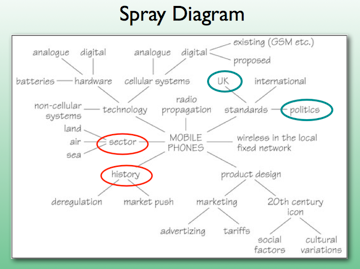
- #DONELLA MEADOWS THINKING IN SYSTEMS DOWNLOAD EBOOK THINKING#
- #DONELLA MEADOWS THINKING IN SYSTEMS SERIES OF STEPS#
The least obvious part of the system, its function or purpose, is often the most crucial determinant of the system’s behavior. Many of the interconnections in systems operate through the flow of information. A system is more than the sum of its parts.
Donella Meadows Thinking In Systems Download EBOOK Thinking
Donella Meadows was known as much for nurturing positive outcomes as she was for delving into the science behind global dilemmas.Developed by renowned systems thinker Peter Senge, these five disciplines each enhance the ability of a person or organization to use learning effectively. While readers will learn the conceptual tools and methods of systems thinking, the heart of the book is grander than methodology. Meadows and Diana Wright, ISBN: 1844077268 , This book has been distilled out of the wisdom of thirty years of systems modeling and teaching carried out by dozens of creative people, most of themDownload EBOOK Thinking in Systems: A Primer PDF for free The author of the book: Format files: PDF, EPUB The size of the: 19.71 MB Language: English ISBN-13: 557 Edition: Chelsea Green Publishing Date of issue: Description of the book Thinking in Systems: A Primer: In the years following her role as the lead author of the. Meadows and Diana Wright PDF Download, By Donella H.
Donella Meadows Thinking In Systems Series Of Steps
Otto Scharmer of the Presencing Institute is especially helpful in understanding the theory.Biomimicry is the concept of using natural forms, materials, and processes as models to drive human innovation. It begins by observing reality as it is, retreating and reflecting on those observations, and then enacting a new reality.For more information about U Process, visit the Presencing Institute. This process, pictured below, guides participants through a series of steps. To read a more in-depth discussion of Senge’s ideas, we recommend this article from Infed.U Process, also know as Theory U, is a useful methodology for collectively approaching difficult problems and developing innovative, appropriate solutions.

Double-loop learning occurs when error is detected and corrected in ways that involve the modification of an organization’s underlying norms, policies and objectives.If we continue the example of the thermostat above, a double loop thermostat would ask why before altering the temperature–are there people here to enjoy the heat? Are the people dressed appropriately? Could we open or close a window instead? The double loop thermometer takes into account its current environment and situation when making decisions.To learn more about this learning tool, try reading Infed’s article on Chris Argyris or visiting Instructional Design’s Double Loop Learning page.Image courtesy of Don Clark and his OODA and Double-Loop Learning Activity pageThe iceberg model is a valuable tool to encourage systemic thinking and help you contextualize an issue as part of a whole system. The thermostat can perform this task because it can receive information (the temperature of the room) and take corrective action. Single-loop learning is like a thermostat that learns when it is too hot or too cold and turns the heat on or off.
Download this file to print out your own!This simple theorem is easily visualized by imagining a bathtub: water enters the tub via the faucet and it exits through the drain, through leaks, or by overflowing the sides. However, if you can identify them and connect them to the events that you are seeing, you may be able to develop lasting solutions that target the whole system rather than short term, reactive solutions.We have a copy of the iceberg model hanging in our office. Just like an iceberg, 90% of which is invisible beneath the water, these structures are often hidden below the surface.

For more information about Open Space principles and hot to use them, read this primer or visit openspaceworld.org.World Café is a tool that facilitates dialogue amongst large groups. Participants are asked to create the agenda themselves by proposing topics that feel important to them, and in this way Open Space events are tailored to the needs and interests of participants. Open Space meetings are focused around a particular topic or purpose, but they begin without a formal agenda. For more information on stocks and flows and this diagram, read this excerpt from Thinking in Systems.Open Space is a technique for organizing meetings, conferences, symposiums, and community events.
This strategy can be a very effective way to summarize and communicate complex ideas and to allow participants to see and internalize the big picture of a discussion or presentation.The following example by graphic facilitator Brandy Agerbeck helps to explain the graphic facilitation process and how it can help clarify and synthesize ideas. At the end of the meeting, insights from the many discussions are shared with the entire group.If you’d like to learn more, the World Café website is a great source of information about this dialogue process.Graphic facilitation is the process of translating complex concepts into a visual language of words and pictures and recording them in real time. During each session, participants meet around tables in small groups to discuss a question posed at the beginning of that round, and then move to a new table with different people before the next round of discussions. Listen Together for Patterns and InsightsEvents hosted using the World Café process are broken into multiple short discussion sessions.

In addition, the Creative Learning Exchange hosts a biennial conference on systems thinking in education.


 0 kommentar(er)
0 kommentar(er)
